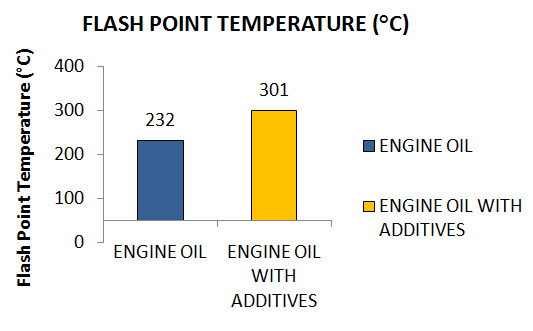Title: Understanding Motor Oil Flash Points: What You Need to Know
Introduction:
The flash point of motor oil is a critical but often overlooked aspect of engine lubrication. It represents the temperature at which the oil begins to vaporize and emit flammable fumes when exposed to an open flame or spark. Understanding this property is essential for ensuring the proper functioning and longevity of your vehicle’s engine. In this article, we’ll delve into what exactly the flash point is, why it matters, and how it can significantly impact your engine’s performance and safety. Whether you’re a seasoned car enthusiast or a casual driver, this knowledge can help you make informed choices when selecting motor oil for your vehicle.
Defining the Flash Point
The flash point of motor oil is the temperature at which the oil emits vapor that can ignite when exposed to an open flame or spark. It’s a critical parameter that provides insights into the oil’s ability to withstand high-temperature conditions within your engine. In simple terms, it’s the temperature where motor oil can catch fire.
Why It Matters
Understanding the flash point of motor oil is of paramount importance for several reasons:
- Engine Protection: The flash point is an indicator of the oil’s ability to withstand high temperatures without breaking down. Motor oil that can endure these extremes effectively ensures your engine remains well-lubricated and protected.
- Minimizing Vaporization: High-quality motor oils are designed to have a high flash point, reducing the likelihood of vaporizing too soon within the engine. This, in turn, minimizes oil consumption and the need for frequent top-ups.
- Safety: The flash point also holds safety implications. In the rare event of a major engine malfunction, understanding the flash point helps emergency responders assess potential fire risks.
- Regulatory Compliance: Various industry standards and regulations mandate minimum flash point requirements for motor oils, ensuring that they meet safety and performance criteria.
Factors at Play
The flash point of motor oil is influenced by factors such as the oil’s composition, additives, and viscosity. Different engine types, such as gasoline and diesel, may require motor oils with varying flash point specifications. Using the wrong type of oil can have detrimental effects on engine performance and longevity.
In essence, the flash point is a pivotal aspect of motor oil that every vehicle owner should consider when selecting the right lubricant. It can mean the difference between a smoothly running engine and potential complications down the road.
See the below video for understanding flash point
In our next section, we’ll explore how to choose the ideal motor oil based on its flash point, helping you make informed decisions to keep your engine running at its best.
The Significance of Flash Points in Engine Lubrication
Engine lubrication is a crucial aspect of maintaining the longevity and efficiency of your vehicle’s heart – the engine. At the core of engine lubrication is motor oil, which not only reduces friction but also plays a vital role in temperature regulation. Within the realm of motor oil characteristics, one often underestimated parameter is the flash point, and it holds significant importance in engine lubrication. Let’s dive deeper into why the flash point is a critical factor.
Maintaining Engine Performance
The primary objective of engine lubrication is to ensure all moving parts operate smoothly, without excessive friction or heat buildup. Motor oil accomplishes this by creating a protective barrier between components. However, as an engine operates, it generates intense heat. This is where the flash point becomes crucial.
What Does the Flash Point Signify?
The flash point of motor oil denotes the temperature at which it begins to emit vapor that can ignite when exposed to an open flame or spark. Essentially, it’s the temperature at which the oil can catch fire. Now, you might wonder, why is this relevant to engine lubrication?
Mitigating Oil Breakdown
As an engine heats up during operation, motor oil is subjected to elevated temperatures. If the oil’s flash point is too low, it may start vaporizing prematurely. This vaporization can lead to oil consumption, leaving the engine inadequately lubricated. In contrast, motor oil with a higher flash point can withstand these elevated temperatures, reducing vaporization, and ensuring the engine’s components are adequately protected.
The Consequences of Low Flash Points
Using motor oil with a low flash point can have adverse effects on your engine. It can lead to increased oil consumption, decreased lubrication efficiency, and even contribute to engine overheating. Over time, this can result in accelerated wear and tear, reduced fuel efficiency, and potentially costly engine damage.
Safety Considerations
The flash point isn’t just about engine performance; it’s also about safety. In rare cases where an engine malfunctions severely, emergency responders need to understand the potential fire risks. Knowing the flash point of the oil in use can be critical in such situations.
Meeting Industry Standards
The automotive industry and regulatory bodies have set specific standards for motor oils, including minimum flash point requirements. Adherence to these standards ensures that the motor oil meets safety and performance criteria, providing consumers with a level of confidence in their choice.
Factors Affecting Flash Points
The flash point of motor oil is a vital property that speaks volumes about its performance under extreme conditions. Understanding what influences this critical parameter is essential for making informed choices when it comes to engine lubrication. Let’s explore the factors that affect the flash point of motor oils.
1. Oil Composition
The composition of motor oil, particularly the base oil, has a profound impact on its flash point. Different base oils, such as conventional mineral oil, synthetic oil, or a blend of both, exhibit varying flash points. Synthetic oils, known for their high-temperature stability, generally possess higher flash points compared to conventional oils.
2. Additives
Additives play a pivotal role in motor oil formulations. They are designed to enhance specific performance characteristics. Certain additives can raise the flash point of motor oil, increasing its resistance to vaporization at high temperatures. This is particularly important for oils designed for high-performance or heavy-duty applications.
3. Viscosity
Viscosity, or the thickness of the oil, can impact its flash point. Thicker, more viscous oils typically have higher flash points. However, it’s crucial to choose the right viscosity grade based on your vehicle’s requirements, as using oil that is too thick can lead to poor engine lubrication, especially in cold conditions.
4. Engine Type
The type of engine also plays a role in determining the ideal flash point. Gasoline and diesel engines, for instance, have different operating temperature ranges. Therefore, the flash point requirement for motor oil in a gasoline engine may differ from that in a diesel engine. Using the wrong type of oil can result in poor engine performance and potentially significant damage.
5. Oil Formulation for Specialized Applications
In cases where motor oils are formulated for specialized applications, such as racing, extreme weather conditions, or heavy-duty industrial machinery, the flash point is carefully adjusted to meet the specific demands of those environments. These oils are engineered to withstand extreme heat or cold, making them ideal for their intended purpose.
6. Quality and Brand
The quality of the motor oil, as well as the reputation of the brand, can influence the flash point. High-quality oils often undergo rigorous testing and adhere to industry standards, which include flash point requirements. Reputable brands tend to provide consistent, reliable flash points in their products.
Understanding the factors that affect the flash point of motor oils empowers vehicle owners to make informed decisions when choosing the right lubricant. It’s essential to consider the type of engine, intended use, and manufacturer recommendations to select the motor oil with the appropriate flash point for optimal engine protection and performance. In our next section, we’ll explore how flash points may vary for different engine types and why this is a critical consideration when selecting motor oil.
Choosing the Right Motor Oil Based on Flash Points
Selecting the ideal motor oil for your vehicle involves a host of considerations, and one often overlooked yet critical factor is the oil’s flash point. This crucial parameter can have a significant impact on engine performance and safety. Here’s how to choose the right motor oil based on flash points.
1. Refer to Your Vehicle’s Manual
Your vehicle’s manufacturer provides valuable information on the recommended motor oil specifications. The manual typically specifies the appropriate viscosity grade and may offer insights into flash point requirements. Adhering to these recommendations is a wise starting point to ensure that you’re using motor oil that aligns with your engine’s design and performance requirements.
2. Engine Type Matters
Different types of engines, such as gasoline and diesel engines, have unique operating temperature ranges and requirements. Gasoline engines often require motor oils with lower flash points, as they operate at relatively lower temperatures compared to diesel engines. Using the correct oil for your engine type ensures optimal performance and longevity.
3. Consider Your Climate
Climate conditions in your region can also influence your choice of motor oil based on flash points. If you live in an area with extremely high temperatures, selecting an oil with a higher flash point can help maintain adequate lubrication under heat stress. Conversely, in cold climates, a lower viscosity oil with an appropriate flash point ensures smooth engine startup.
4. Performance and Specialized Applications
For those who push their vehicles to the limit, such as high-performance car enthusiasts or racers, it’s crucial to choose motor oil tailored for specialized applications. These oils are formulated with higher flash points to withstand extreme heat generated during aggressive driving. Always opt for oil designed for your specific needs.
5. Brand Reliability
Reputable motor oil brands place a strong emphasis on quality and consistency in their products. When selecting motor oil based on flash points, it’s wise to choose brands with a trusted reputation in the industry. High-quality oils from reputable manufacturers tend to meet or exceed industry standards and specifications.
6. Check the Container
The flash point information is often printed on the motor oil container. This valuable data allows you to compare different oil products and make an informed choice. Ensure you’re selecting the right flash point range for your vehicle’s engine and operating conditions.
By paying attention to these considerations and understanding the significance of flash points, you can confidently choose the right motor oil for your vehicle. Proper selection not only safeguards your engine’s performance but also ensures your safety, making it a decision well worth your time and consideration. In the next section, we’ll explore where and how you can easily find flash point information on motor oil containers, further simplifying the decision-making process.
How to Find Flash Point Information
Understanding the flash point of motor oil and its significance is vital for maintaining your vehicle’s engine. But where can you find this crucial piece of information when shopping for motor oil? Here’s how to easily locate flash point information on motor oil containers.
1. Read the Label
The first and most direct way to find flash point information is to read the label on the motor oil container. The label typically provides a comprehensive overview of the oil’s specifications, including its flash point. It may be listed in the “Specifications” or “Properties” section. Pay close attention to this data to ensure it aligns with your engine’s requirements.
2. Check the Technical Data Sheet
For detailed technical information, especially for motor oils used in industrial or specialized applications, consult the technical data sheet provided by the manufacturer. This sheet offers a more in-depth look at the oil’s properties, including flash point data. You can usually find these data sheets on the manufacturer’s website or request them directly.
3. Manufacturer’s Website
Many reputable motor oil manufacturers maintain user-friendly websites that offer comprehensive product information. The flash point data for each of their products is often readily available in the product descriptions or specifications section. These websites are valuable resources for in-depth information about specific motor oils.
4. Retailer Websites and Apps
Online retailers and automotive supply stores often provide extensive product details on their websites and apps. You can find flash point information for the motor oils they offer, allowing you to make an informed purchase from the comfort of your home. Some retailers also have apps that provide convenient access to this data.
5. Contact Customer Support
If you’re having trouble finding flash point information for a specific motor oil product, consider reaching out to the manufacturer’s customer support. Most manufacturers are readily available to assist with product-related queries and can provide you with the flash point data you need.
6. Consult Industry Resources
Various industry resources, forums, and databases exist where enthusiasts and professionals discuss and share information about motor oils. These platforms can be valuable for gathering insights about specific motor oils, including flash point details. Just ensure that the information you find is reliable and from a credible source.
Understanding the flash point of motor oil is essential for making informed decisions that benefit your engine’s performance and longevity. Whether you’re shopping at a physical store or browsing online, access to flash point information is readily available to help you choose the right motor oil for your vehicle. In the following section, we’ll delve into the importance of safety and best practices when handling motor oil with specific flash points.
Maintenance and Safety Considerations
When it comes to motor oil, understanding its flash point is not only about engine performance but also about safety and responsible usage. Maintenance and safety considerations are crucial, and here’s how to ensure you’re handling motor oil with specific flash points safely and responsibly.
1. Store Motor Oil Properly
Start with proper storage. Keep motor oil containers in a cool, dry, and well-ventilated area. Extreme temperature fluctuations can affect the oil’s properties, including its flash point. Storing oil in a controlled environment helps maintain its quality and safety.
2. Avoid Open Flames and Sparks
Motor oil with a low flash point can be more prone to ignition. When handling or storing oil, ensure it’s away from open flames, sparks, and heat sources. Smoking near oil containers is a risky practice and should be avoided.
3. Use the Right Container
Only use approved and suitable containers for storing or transporting motor oil. Avoid using containers that are not designed for this purpose, as they may not provide adequate protection against leaks or accidental spills.
4. Proper Disposal
Disposing of used motor oil is a responsibility that goes hand in hand with maintenance. Never dispose of motor oil by pouring it down drains or onto the ground. Most areas have designated collection centers or recycling facilities for used motor oil. Utilize these services to ensure the safe disposal and recycling of used oil.
5. Protect Yourself
When handling motor oil, use protective gear as needed. This may include gloves and safety goggles. Accidental spills can happen, and these precautions help prevent contact with your skin and eyes.
6. Understand Flash Point Implications
Familiarize yourself with the flash point of the motor oil you’re using. A higher flash point offers more safety in high-temperature environments, while a lower flash point is generally acceptable for regular use in standard engine conditions. Knowing the flash point can guide you in handling the oil safely.
7. Follow Manufacturer Recommendations
Manufacturers provide guidelines on safe use and handling of their motor oil products. Pay attention to these recommendations and adhere to them for optimal safety.
8. Emergency Preparedness
In rare cases of engine failure or accidents, knowing the flash point of the motor oil in use can be valuable information for emergency responders. Having the flash point data readily available can help assess fire risks and take appropriate action.
Maintenance and safety considerations are integral to responsible motor oil usage. Being informed about the flash point of your chosen motor oil and following best practices ensures that you not only maximize engine performance but also safeguard your well-being and the environment. In the next section, we’ll explore case studies and real-world examples that illustrate the impact of flash points on engine performance and safety.
Real-World Examples of Flash Point Impact on Engine Performance and Longevity
Understanding the flash point of motor oil is not just a technical detail; it can have tangible consequences on engine performance and longevity. Here are some real-world examples that illustrate the impact of flash points:
1. High-Performance Racing Engines:
In the world of motorsports, high-performance engines are pushed to their limits. Racing engines generate extreme heat, and using motor oil with a low flash point can lead to premature vaporization and a lack of proper lubrication. This can result in engine overheating, reduced power output, and, in extreme cases, engine failure. Racing teams opt for specialized motor oils with higher flash points to ensure consistent performance under these demanding conditions.
2. Hot Summer Temperatures:
During scorching summer months, ambient temperatures can rise significantly, causing your engine to operate under higher thermal stress. Motor oils with lower flash points may start to vaporize at these elevated temperatures, causing them to lose their protective qualities. Using motor oil with a higher flash point can better safeguard your engine, preventing excessive wear and tear.
3. Commercial Trucking:
Long-haul trucks often traverse diverse climates and terrains. Trucks operating in hot desert regions, for instance, experience prolonged exposure to high temperatures. Motor oil with a low flash point may not adequately protect the engine in these conditions. Trucking companies frequently choose oils with higher flash points to ensure consistent performance, reduce maintenance, and extend engine life.
4. Cold Starts in Winter:
In cold climates, vehicles experience challenges during winter starts. Using motor oil with an appropriate flash point, designed to maintain its viscosity in cold conditions, ensures that the engine is adequately lubricated even during cold starts. Lower flash point oils might become too thick in the cold, causing issues like slow cranking and engine wear.
5. Conventional vs. Synthetic Oils:
Conventional motor oils typically have lower flash points compared to synthetic oils. Modern vehicles often benefit from the superior high-temperature stability of synthetic oils, which have higher flash points. Switching from conventional to synthetic motor oil can extend engine life and improve performance under extreme conditions. These real-world examples demonstrate the critical role of flash points in engine performance and longevity. The choice of motor oil with an appropriate flash point for specific operating conditions can make a significant difference in the health and efficiency of your engine. By understanding these scenarios, you can make informed decisions when selecting motor oil for your vehicle
Conclusion
The flash point of motor oil, often overshadowed but undeniably crucial, plays a significant role in safeguarding your engine’s performance, longevity, and your safety. Understanding this property empowers you to make informed decisions when selecting the right motor oil for your vehicle. Whether you’re facing extreme temperatures, racing on the track, or embarking on long-haul journeys, the flash point is a defining factor in your engine’s well-being. It’s not just a technical detail; it’s a key to optimizing your vehicle’s health and ensuring that it runs smoothly, even when pushed to its limits. So, when it comes to motor oil, remember that the flash point is not a mere number but a vital piece of information that can make all the difference.
Useful links :
FAQs About the Flash Point of Motor Oil
- What is the flash point of motor oil?
The flash point of motor oil is the temperature at which the oil begins to emit vapor that can ignite when exposed to an open flame or spark. It’s a critical parameter for engine lubrication and safety.
2. Why is the flash point of motor oil important?
The flash point is essential because it indicates the oil’s ability to withstand high temperatures without breaking down. Using motor oil with an appropriate flash point ensures proper engine lubrication and protection.
3. How does the flash point affect engine performance?
Motor oil with a higher flash point is less likely to vaporize at elevated temperatures. This helps maintain engine lubrication, reduces oil consumption, and prevents engine overheating.
4. What happens if I use motor oil with the wrong flash point for my engine type?
Using motor oil with an inappropriate flash point can lead to poor engine performance, increased wear and tear, and even engine damage. It’s crucial to use the right type of oil for your specific engine.
5. Do different engine types require motor oils with different flash points?
Yes, gasoline and diesel engines, for example, have different operating temperature ranges. Therefore, the flash point requirements for motor oils in these engines may vary.
6. Where can I find the flash point information for motor oil?
You can typically find flash point information on the motor oil container label, in the product specifications, or on the manufacturer’s website. It’s important to check the container or consult the manufacturer’s resources.
7. Are synthetic oils better in terms of flash points compared to conventional oils?
Generally, synthetic oils have higher flash points compared to conventional oils. This makes them suitable for high-temperature applications and extreme conditions.
8. Can motor oil with a low flash point be dangerous?
Motor oil with a low flash point can pose a fire hazard when exposed to open flames or sparks. It’s important to handle such oils with care and follow safety guidelines.
9. Are there any safety precautions I should take when dealing with motor oil and flash points?
When handling motor oil, use appropriate protective gear, avoid open flames, and follow manufacturer recommendations for safe storage and disposal. Safety should be a priority when dealing with any engine lubricants.
10. What is the flash point standard for motor oils?
The flash point standard for motor oils is set by various industry and regulatory bodies. It’s important to ensure that the motor oil you choose meets these standards for safety and performance.





Leave a Reply